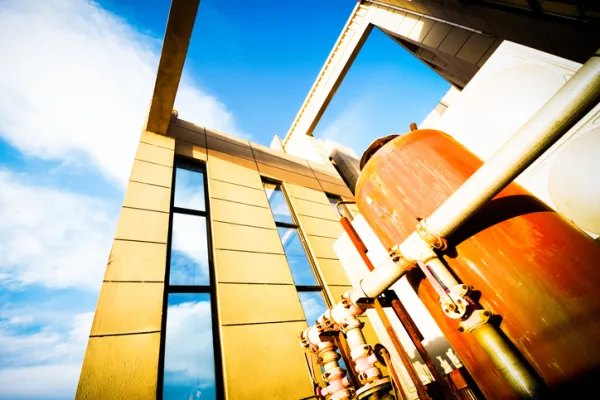Click here to see the ranking.
Of all the geographic regions that mark investment managers' mental world maps, Emerging Europe, Middle East and Africa, or EMEA, is by far the most diverse. East Asia and Latin America, EMEA's rivals for the cash of global emerging-markets funds, are much more of a piece culturally, historically and in terms of their places in the world economic equation. EMEA brings together a grab bag of countries -- Poland and South Africa, Israel and Russia -- with little more in common than their time zones.
To investors in the region, this heterogeneity can be challenging, forcing them to shift their weightings in response to a crazy quilt of external factors -- from the price of oil to European Central Bank interest rates to suicide bomb attacks in Gaza. For every turn of events short of global war or depression, there is an EMEA country that can benefit or lose out. "You have markets influenced by the dollar and markets influenced by the euro, markets that rise with commodity prices and markets that are inverse to commodities," says Mikhail Derkavski, director of the Grassroots Research unit of RCM Capital Management in San Francisco who manages the EMEA portion of the firm's $2.5 billion non-U.S. equity portfolio. "You can trade every imaginable cycle without leaving your desk."
To the economists and strategists who oversee regional research teams out of London, heterogeneity means conducting more analysis the old-fashioned way, country by country.
"Naturally, we use sector analysts," says Alexander Garrard, who along with Reinhard Cluse heads the top-ranked Economics team for UBS. "But the nature of the region puts the emphasis on country risk."
Conversely, investors say, providing excellent research depends to a great degree on banks having the reach and stamina to keep experts on the ground across the region's thinly capitalized expanses. When the Berlin Wall fell in 1989, every European investment bank worth its salt proclaimed its intention to pour through the breach and dominate Eastern bloc brokerage and underwriting. Fifteen years later, Eastern Europe may have exceeded political expectations, with its four most advanced countries inducted into the European Union, but its financial impact has been trivial. Listed stocks in Poland, Hungary and the Czech Republic together are capitalized at about $60 billion, according to MSCI indexes, less than Mexico's $76 billion. Russia, though a rising world power in oil and a vestigial military power, contributes a mere $40 billion more in market capitalization. Turkey, which may change history over the next decade by bringing a major Islamic nation into the EU, remains a boutique financially, its public companies worth a total of $20 billion.
In these straitened circumstances it's not surprising that the top house for EMEA research -- for a second year in a row -- is UBS, the European banking giant with the balance sheet to fund long-term investment and a strategic incentive to beat American rivals in its own backyard. Deutsche Bank takes second in the 2005 Emerging EMEA Research Team, with ING Financial Markets and U.S. interloper Merrill Lynch tying for third. "UBS has proved what you can do if you are willing to invest in an excellent product and be a presence everywhere," one money manager fan concludes.
In 2004 all the major markets in the region -- except Russia -- had one thing in common: success. MSCI's emerging EMEA index gained a ruddy 26 percent in euro terms last year, nearly twice the 13.6 percent increase for global emerging markets. Poland topped the charts with 47 percent appreciation in euro terms; South Africa rose 31 percent and Turkey 28.5 percent. Israel's Tel Aviv 100 index gained 21 percent in dollar terms.
Underlying these numbers was the fact that disparate economies entered similar virtuous cycles. External good luck played its part: A booming world economy bolstered exports even as a weakening dollar lifted local currencies and devalued the many assets across the region, like Israeli housing, that are formally or informally priced in U.S. currency. But the region also benefited from internal economic discipline, maintained by the best group of finance ministers and central bankers in recent memory. The combination allowed governments to slash interest rates without igniting more than single-digit inflation. Economies responded with growth, jobs, investment and rising equity prices.
Will the good times keep rolling in 2005? Our top-ranking analysts are split. UBS's Garrard is sanguine: "We're basically looking for more of the same in a global environment that continues to be benign." Mehmet Simsek, who co-heads the second-place Economics team at Merrill Lynch in London, sees the party winding down as interest rate hikes from the U.S. Federal Reserve Board constrain most countries' ability to loosen their own financial spigots further. "With the Fed lifting rates," he says, "it's going to be very difficult on balance for emerging markets to lower any further." Meanwhile, Merrill forecasts that oil will remain more than $40 a barrel this year, hurting all the big EMEA markets save Russia, which is hurting itself at the moment with erratic government behavior toward business.
Yet the fact that the chief threat to most EMEA markets comes from outside is already a triumph for the region. From Pretoria to Warsaw to Ankara to Jerusalem, governments habitually afflicted by fractious coalitions, populist cave-ins or erratic policy shifts have become economically steady over the past year or two. Only Poland has an election looming in the fall to upset the equilibrium, and the strongly promarket Citizens' Platform party is leading in the polls.
The cloud in the region's sky is Russia, which until the arrest of Yukos Oil Co. CEO Mikhail Khodorkovsky was EMEA's best-performing market and most-acclaimed future hope. The Khodorkovsky affair reached its climax in December of last year, when state-owned oil company Rosneft took over Yukos's biggest subsidiary, Yuganskneftegaz. The Russian Trading System index, which had plunged by 30 percent in dollar terms in the seven months before that resolution, has bounced back by 19 percent since the sale. External conditions -- which is to say, high oil prices -- are ideal for Russian equities to soar again. But investors remain wary that President Vladimir Putin and his coterie of ex-security-service advisers will turn on more of the oligarchs who control most of the country's resources and industry. Says Ian Hague, a partner at New Yorkbased Firebird Funds who manages $500 million of Russian equities, "It's going to be another rough year this year."
The ranking was compiled by Institutional Investor under the direction of Director of Research Operations Group Sathya Rajavelu, Assistant Managing Editor for Research Lewis Knox and Senior Editor Jane B. Kenney, with Senior Associate Editor Tucker Ewing. Contributing Editor Ben Mattlin and Contributors Pam Baker, Eric Baum, Suzanne Lorge, Scott Martin, Paul Sweeney and Victoria Zunitch wrote the sector reports.





